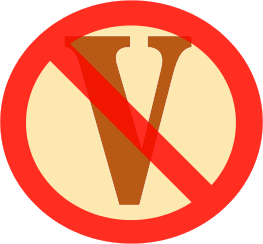
AYURVEDIC HERB SUPPLEMENTS
Table of ContentsHow Does This Ayurvedic Herb Supplement Improve Wellness?CLINICAL AYURVEDIC REVIEWNeem is widely used in Ayurveda because of its effectiveness in dealing with nearly all types of Pitta and Kapha disorders. Bitter and very cooling, it is usually combined with other herbs to offset its Vata-aggravating qualities. Neem has traditionally been used to purify the blood, cleanse the liver and support the immune system. It is also commonly used for a variety of skin irritations and inflammations, and to support healthy blood glucose levels. Detoxification for Pitta and Kapha
Possible Contraindications:Pregnancy, hypoglycemia, extreme fatigue, emaciation, high Vata.SUGGESTED USE
Biocharacteristics of Neem Leaf
Foods with a Similar Nature to Neem LeafTurmeric Turmeric has these Actions in CommonAnti-inflammatory, Antimicrobial, Cholagogue, Immune-calming, Vulnerary, Alterative, Antibacterial, Antipruritic, Detoxicant, Lowers-blood-sugar, Anthelminthic, Antifungal, Blood-thinner, Hypolipidemic, Mast-cell-stabilizerTurmeric Root (Fresh) Turmeric Root (Fresh) has these Actions in CommonAnthelminthic, Antifungal, Cholagogue, Immune-calming, Vulnerary, Anti-inflammatory, Antimicrobial, Detoxicant, Lowers-blood-sugar, Alterative, Antibacterial, Antipruritic, Hypolipidemic, Mast-cell-stabilizerAloe Vera Juice / Gel Aloe Vera Juice / Gel has these Actions in CommonAlterative, Antifungal, Cholagogue, Lowers-blood-sugar, Anti-inflammatory, Antimicrobial, Detoxicant, Vulnerary, Antibacterial, Blood-thinner, HypolipidemicDandelion Leaves Dandelion Leaves has these Actions in CommonAnti-estrogenic, Blood-thinner, Diuretic, Lowers-blood-sugar, Anti-inflammatory, Cholagogue, Hypolipidemic, Alterative, Antimicrobial, Detoxicant, Immune-calmingCilantro Cilantro has these Actions in CommonAlterative, Blood-thinner, Diuretic, Refrigerant, Anti-inflammatory, Cholagogue, Hypolipidemic, Antipyretic, Detoxicant, Immune-calmingBurdock Root (Gobo) Burdock Root (Gobo) has these Actions in CommonAlterative, Cholagogue, Hypolipidemic, Anti-estrogenic, Detoxicant, Lowers-blood-sugar, Anti-inflammatory, Diuretic, VulneraryCranberry Cranberry has these Actions in CommonAnti-inflammatory, Constipative, Lowers-blood-sugar, Antimicrobial, Diuretic, Refrigerant, Alterative, Blood-thinner, Immune-calmingGarlic (raw) Garlic (raw) has these Actions in CommonAnthelminthic, Antimicrobial, Diuretic, Antibacterial, Blood-thinner, Hypolipidemic, Antifungal, Detoxicant, VulneraryChickweed Chickweed has these Actions in CommonAnti-inflammatory, Diuretic, Vulnerary, Blood-thinner, Hypolipidemic, Alterative, Detoxicant, RefrigerantHibiscus Hibiscus has these Actions in CommonBlood-thinner, Diuretic, Vulnerary, Cholagogue, Lowers-blood-sugar, Anti-inflammatory, Constipative, RefrigerantFenugreek Fenugreek has these Actions in CommonAnti-inflammatory, Detoxicant, Lowers-blood-sugar, Antipyretic, Diuretic, Vulnerary, Cholagogue, HypolipidemicHerb Supplements with a Similar Nature to Neem LeafYarrow Yarrow has these Actions in CommonAntifungal, Immune-calming, Antimicrobial, Vulnerary, Antipyretic, Antiseptic, Blood-thinner, Alterative, Cholagogue, Anti-estrogenic, Detoxicant, Anti-inflammatory, DiureticGoldenseal Goldenseal has these Actions in CommonAntipyretic, Antiseptic, Cholagogue, Alterative, Detoxicant, Anti-inflammatory, Diuretic, Antibacterial, Refrigerant, Antifungal, Vulnerary, AntimicrobialGuluchyadi Kashayam Guluchyadi Kashayam has these Actions in CommonAntibacterial, Antimicrobial, Antipyretic, Cholagogue, Immune-calming, Alterative, Refrigerant, Antacid, Vulnerary, Anti-inflammatoryDandelion Root Dandelion Root has these Actions in CommonAntipyretic, Cholagogue, Detoxicant, Hypolipidemic, Alterative, Lowers-blood-sugar, Anti-estrogenic, Refrigerant, Anti-inflammatory, AntimicrobialCalendula, Marigold Calendula, Marigold has these Actions in CommonAnti-inflammatory, Vulnerary, Antifungal, Antimicrobial, Antipyretic, Antiseptic, Cholagogue, Detoxicant, Alterative, HypolipidemicBhringaraj Bhringaraj has these Actions in CommonCholagogue, Diuretic, Hypolipidemic, Immune-calming, Anthelminthic, Lowers-blood-sugar, Anti-inflammatory, Vulnerary, Antimicrobial, AntipruriticHoly Basil Leaf (Tulsi) Holy Basil Leaf (Tulsi) has these Actions in CommonAntibacterial, Mast-cell-stabilizer, Antifungal, Antimicrobial, Constipative, Detoxicant, Diuretic, Hypolipidemic, Anti-inflammatory, Immune-calmingAmritarishta (Amrutharishtam) Amritarishta (Amrutharishtam) has these Actions in CommonAnti-inflammatory, Antibacterial, Antimicrobial, Antipruritic, Antipyretic, Cholagogue, Diuretic, Alterative, Immune-calmingGinkgo Ginkgo has these Actions in CommonDiuretic, Hypolipidemic, Alterative, Immune-calming, Anti-inflammatory, Antibacterial, Antifungal, Antimicrobial, Blood-thinnerArjuna Arjuna has these Actions in CommonRefrigerant, Alterative, Vulnerary, Anti-inflammatory, Antibacterial, Antipyretic, Constipative, Diuretic, Hypolipidemic
Joyful Belly is a recognized school of biocharacteristics medicine. TRADITIONALLY INDICATED FOR THESE SYMPTOMSNeem Leaf may be beneficial for these symptoms. The suitability of any herb supplement for a condition is highly dependent on the individual. Please see your doctor before using this herb supplement to treat a medical condition.WHAT'S NEXT? Reviews for Neem Leaf     (4.00 out of 5 stars) 4 ratings (4.00 out of 5 stars) 4 ratings     Sign in to rate this remedy Sign in to rate this remedy
Neem, should only be used for children in small quantities. You can make a tea with 8oz warm almond milk and 1/8tsp neem. Then give one tbsp to the child. since neem is a strong herb, it may be better to schedule a consultation with with a qualified herbalist or practitioner to suggest the right amount. Thanks for asking! Best, -John
Can neem be combined with other herbs to offset its Vata-aggravating qualities? Which are those herbs?
It can be combined with coconut oil, almond milk, or other nourishing ingredients. It can be combined with shatavari or other tonic herbs.
couldn't get past the repulsive taste.. almond milk helped a little but wow.. I take or have taken and adjusted to a lot of "healthy vitamin or mineral tastes" but that was a really tough one.
Perfect any time of the day. I start and end my day with it, and feel lighter and more myself. I would recommend this to anyone who wants to feel better but not through drastic measures. I will definitely be re-ordering in the future.
Try it with almond milk and maple syrup. See if it helps the bitter taste!
Try it with almond milk and maple syrup. See if it helps the bitter taste!
I take neem with honey and turmeric. Mix the 3 together make into a ball or scoope it first think in the morning after drinking my warm water.. fantastic way to start the day and to boost the immune system. parasites bacteria fungus and viruses love sweet blood, so if you keep it a bit bitter they look for another place to go ?
April put a giggle on my face, i know some of the stuff i use is sooooo nasty! that i dont stick with it, but its not going to work if you dont run the race to the finish~!
 |
Join Joyful Belly.
Want our top Ayurvedic recipes and health tips?Subscribe to our free newsletter!






 Print
Print
 On MeWe
On MeWe On Pinterest
On Pinterest On Facebook
On Facebook On Twitter
On Twitter On WhatsApp
On WhatsApp On Email
On Email















